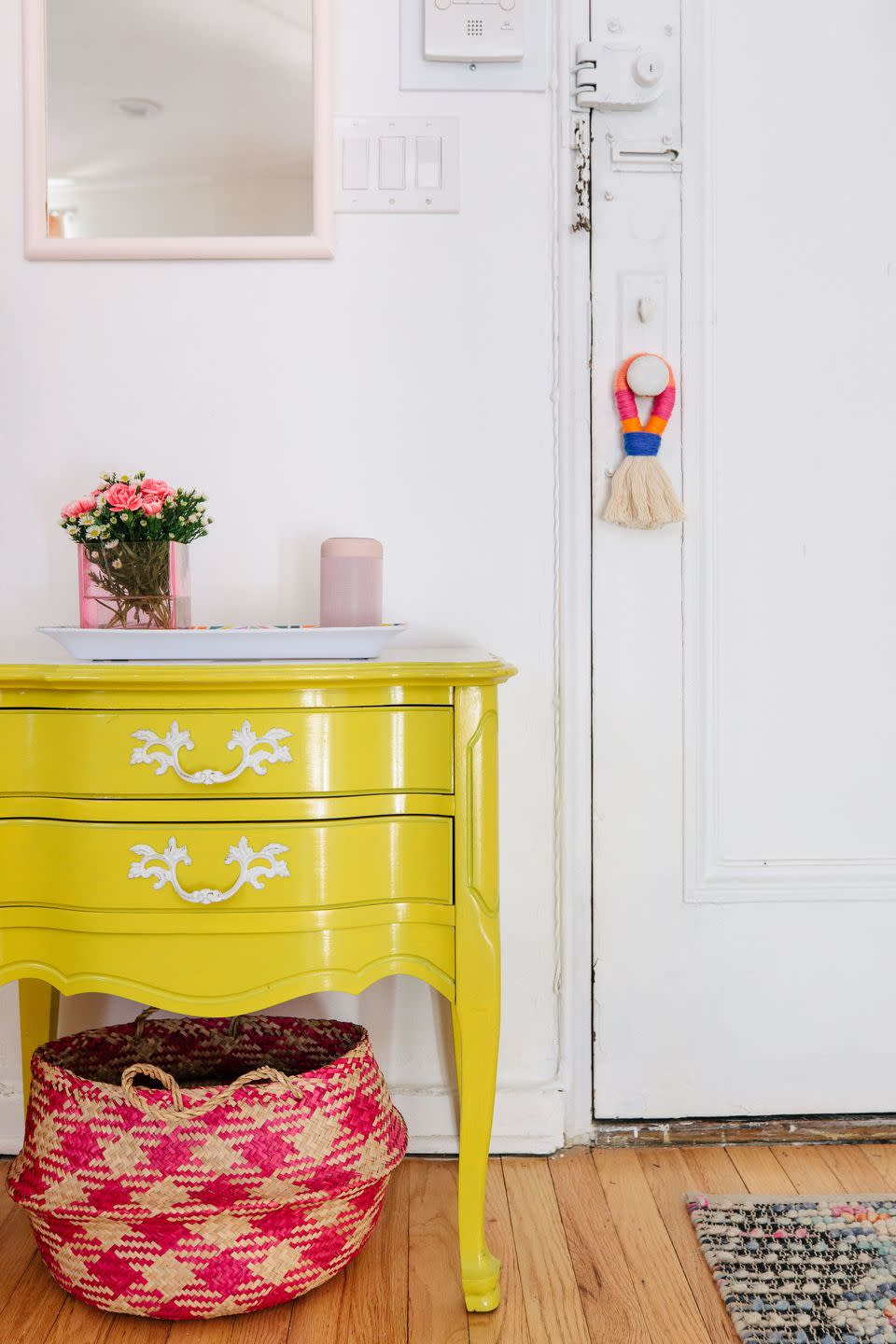Is It a Crime to Paint Antique Furniture?
At House Beautiful we're all about investing in furniture that will last generations. And, especially with current supply chain delays, vintage and antique options are often the best way to get a piece without waiting a months for it to arrive. But once you've got the item, what's the best way to go about refreshing it? Sofas and armchairs can be reupholstered, of course, but what about wood antiques—is it okay to repaint them? Well, as it turns out, the design world is staunchly divided on this topic. Between the naysayers and the "go for it" crowd, however, there are some key takeaways to be had. Here's what the pros say.
When Not to Repaint Wood

"It depends on the quality of the piece and of the painting," says Sophie Williamson. Practically speaking, this may be most significant if you're thinking you might offload the piece down the line. "If it's a high-quality antique you want to resell later, painting diminishes the value," notes Modern Antiquarian founder Margaret Schwartz. Miriam Silver Verga of Mimi & Hill echoes this sentiment: "When you paint an antique, you are deciding that its value is to you alone, because painting something vintage changes its long term price."
"Do not refinish a fine antique," says designer Gray Walker. House of Drennan agrees: "If it's a true antique in great shape, it's a crime!"
In addition to quality, you may also want to consider the materials used—are they rare or difficult to refinish? "I cringe when I see exotic woods like mahogany painted or bleached," says historian Hampton DeVille. Rachel Cannon agrees: "If it’s a thrifted item that is constructed of a common wood like oak or pine, with rudimentary joinery, you’re probably safe to paint it," she says. "However, if it’s made of exotic woods like cherry, mahogany, or satinwood, probably not."
When to Paint Wood Furniture

If it's a piece without much value on the secondhand market or one where the existing finish is in poor condition, a paint job may actually increase value. "It all depends on the piece and the finish of the existing brown," says Ashley Hanley. "If it's in bad shape, a new paint job will bring it back to life," says Camila Pavone.
If you're not worried about maintaining value, many designers say—you guessed it—to go with personal preference. "It's not a crime at all if it means saving something from the dumpster," says Jenny Brown. "The quality of antiques and some vintage pieces is usually far superior to what you would get for the same price today."
"If you want to hold onto something that has been passed down in your family and the only way to do so is to paint it to work with your decor, by all means do so," says Verga.
Travis London argues in defense of painting if it's a true upgrade: "Painting antiques gives them new life and makes them personal to their new home. Antiques are meant to last and be shared for generations, why not bring new life to it?' As Christine Pokorney of Clem Schaub Architects puts it: "If it means the love will continue for that piece, then go for it!"
The Best Way to Paint Wood Furniture
So if you do decide to go for it, what do you need to consider? "Investigate first," advises Williamson. "And proceed with caution." After all, "You want to make sure you're not sitting on a hidden gem," says Cannon. If you're confident that the piece isn't a rare wood or a valuable antique, break out the paint! Here are a few things to consider:
Choose the right paint: There are many options for refinishing a piece. Chalk paint will give a textural element, while Traci Connell prefers to lacquer antique pieces for "a shiny new facelift."
Don't skimp on prep: When you're repainting furniture, prep is key. Make sure you thoroughly clean, sand, and dry furniture before painting, then add enough coats for full coverage and don't forget any necessary sealants or topcoats.
Or: Consider Refinishing
If you don't love the finish of the piece but aren't wild about a solid color or paint finish, consider refinishing the wood itself. "We always try to restore or refinish antiques with beautiful woodgrain," says Zandy Gammons.
As a bonus, "if you want it to hold its value, a restoration or refinish is a better investment," notes Vargas. "The best dealers in Miami love to refinish their midcentury finds but often add cerusing which defines the original wood and shows off its natural grain. We would always choose a gorgeous cerused finish over paint any day." A happy medium? Sounds like something we can all get behind!
Follow House Beautiful on Instagram.
You Might Also Like

